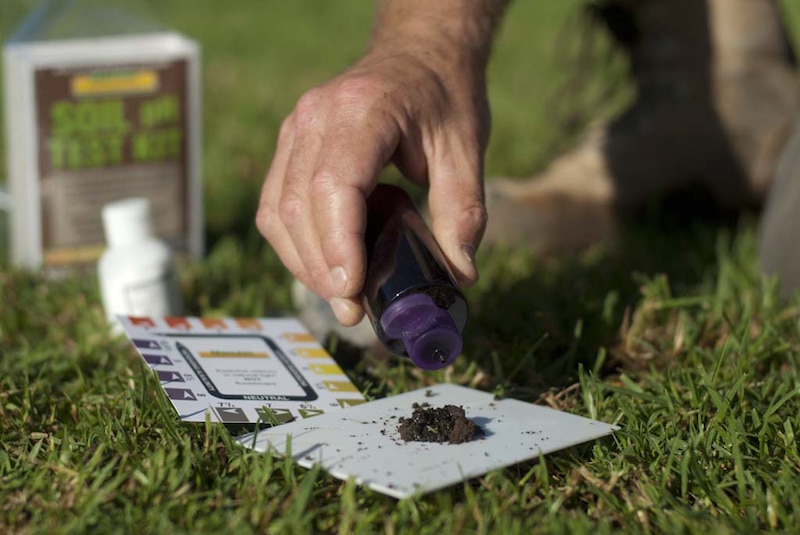What is pH & How Does it Affect My Lawn?
pH is a measure of the level of acidity or alkalinity in any substance. An acidic substance will have a pH of below 6, a neutral substance will have a pH between 6-7, and an alkaline substance will have above 7.
In soil, the natural pH reflects the combined effects of parent material, soil age, topography, climate, the presence of organisms.
Soil pH can change over time due to climatic conditions as well as the management of land including the addition of fertilisers.
How does the pH level of the soil impact my lawn?
The pH level of soil affects the ability of plants, including grasses, to absorb minerals and nutrients essential for growth.
Most plants have an ideal soil pH range in which they thrive. In the case of lawn the ideal pH is somewhere between 6 and 7.
When should I test for pH?
-
New Lawns
In order to give a freshly laid lawn the best chance of thriving, it is highly recommended that the soil pH is tested and, if necessary, corrected prior to laying the new lawn.
-
Established lawns
If an established lawn is not performing to its usual standard, the pH level of the soil may be a contributing factor. Testing the pH level can help determine the root cause and method of remediation.
How to test lawn pH?
Measuring a lawn pH is made extremely simple with the use of a Soil pH Test Kit.
Step 1: Soil sampling
Collect small soil samples from several locations around your lawn area and combine. This will give you an average result that will be more accurate then relying on one sample alone.
You need about a tablespoon size sample all together. Ensure any organic matter has been removed before moving to the next step as this will elevate the acidity of the reading. Break up any clumps.
Step 2: Creating Chemical Reactions
Following the instructions in your kit to add correct amount of indicator liquid to the soil and mix well to make a thick paste. Over the mixture sprinkle the white powder provided in the kit and leave for approx. 1 minute to develop.
Step 3: Reading the Results
Compare the colour of the developed soil sample to the colour chart supplied in your kit. Alkaline soils will appear purple in hue, neutral soils will have a green colouring and acidic soils will be in the yellow, orange and red spectrum.
Raising Lawn pH
If your soil returned an acidic reading of less than 6, you will need to raise the pH in order to return the soil to optimum growing range.
Agricultural lime or dolomite are commonly available additives used to increase soil pH, helping to neutralise acidic soils.
Application rates should always be checked on the product packaging and will depend on the acidity of your soil. A range of 100-250g per m2 per application is typical.
For new lawns it is best to spread the lime and mix into the soil and turf underlay before laying the lawn. For established lawns, lime can be sprinkled on the lawn surface and watered in well.
Lowering the pH
If the soil has a high pH it is alkaline and requires lowering to ideal conditions for lawn growth. Sulphate of ammonia is commonly used, with approx. 100g per m2 reducing the pH by 1 unit.
Other methods to reduce alkalinity include the addition of compost or manure, leaf litter and mulch.
It is important to proceed slowly when making adjustments to soil pH. One application of the additive may well be enough, so after the initial application it is advisable to wait 3 months of so before retesting, and reapplying if required.











